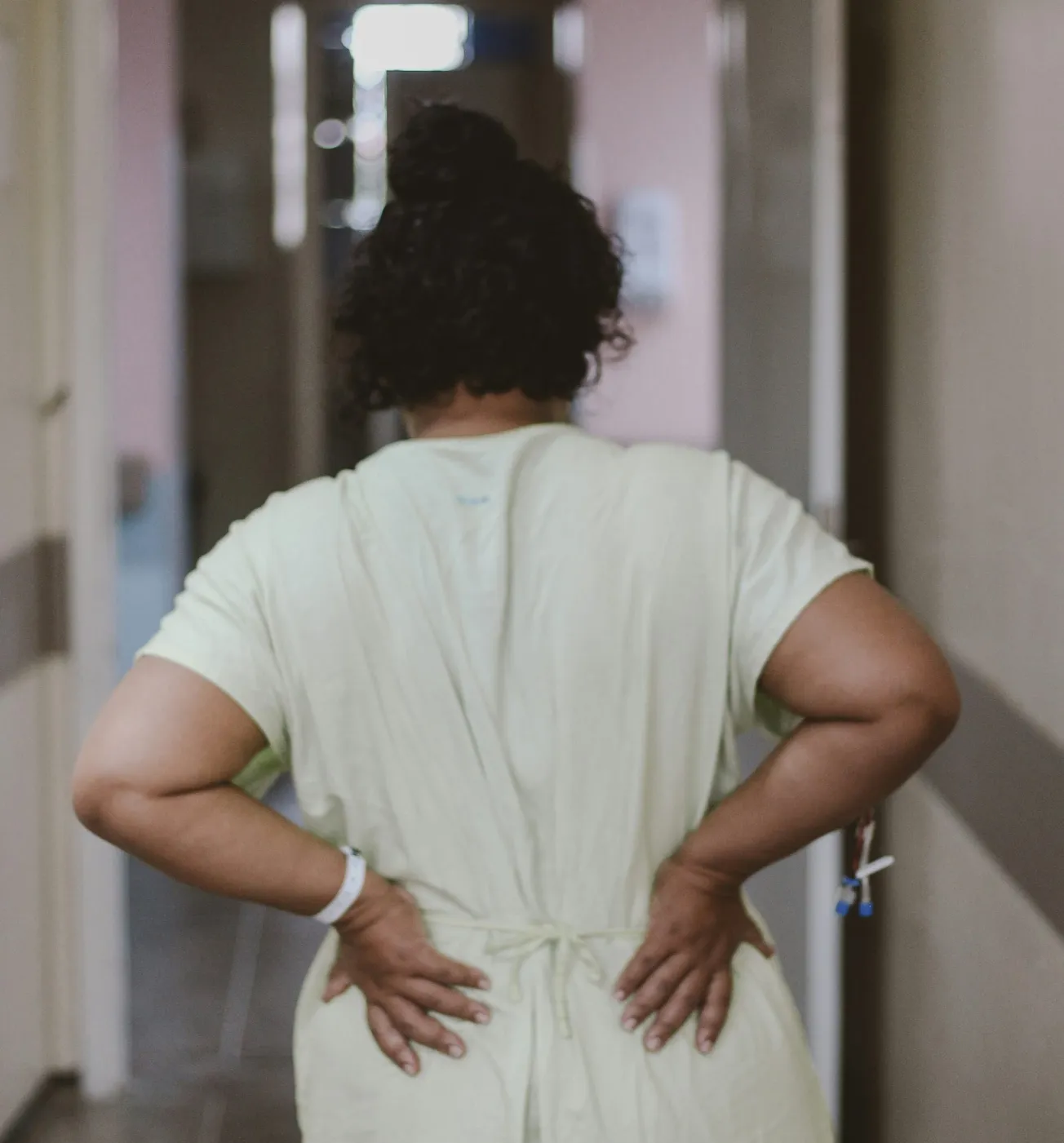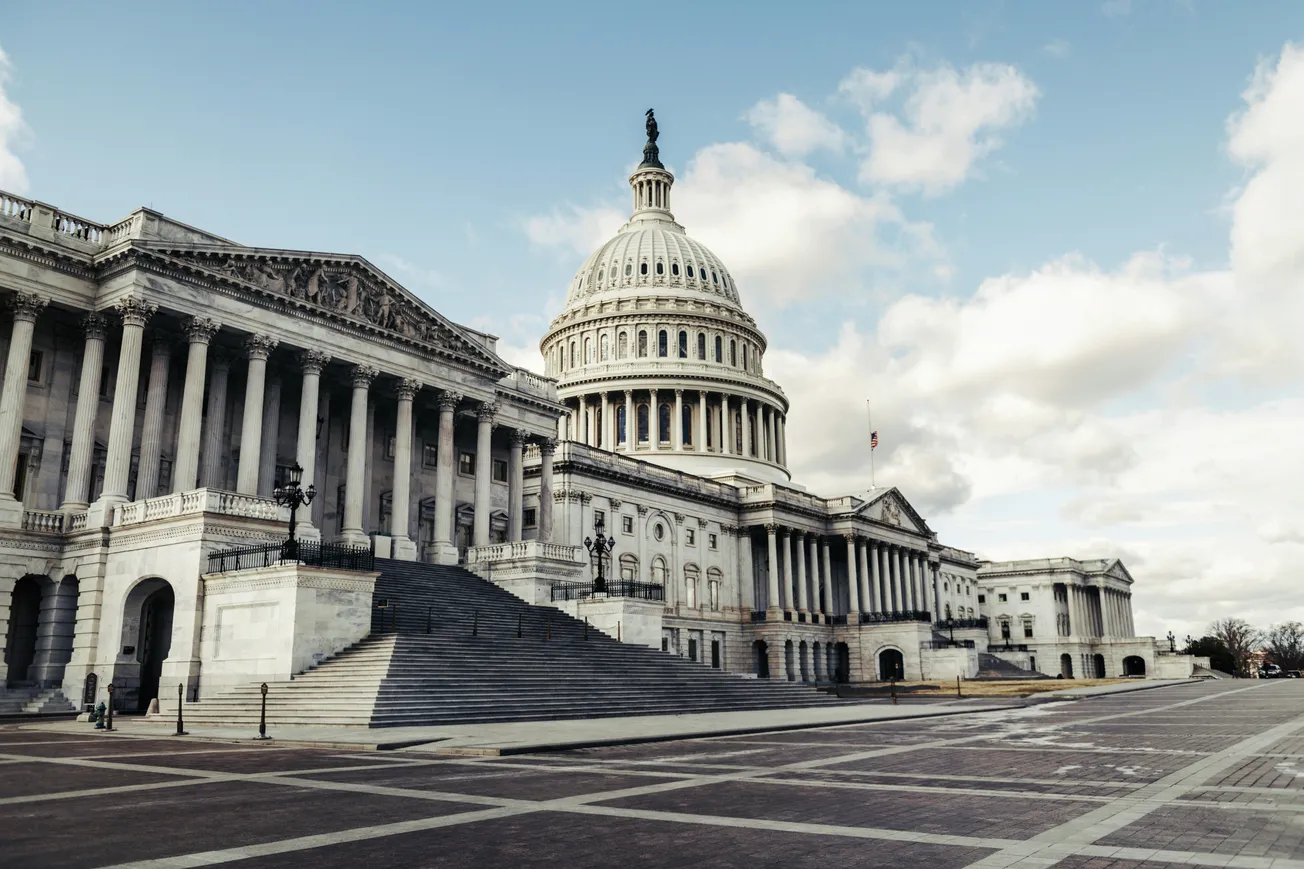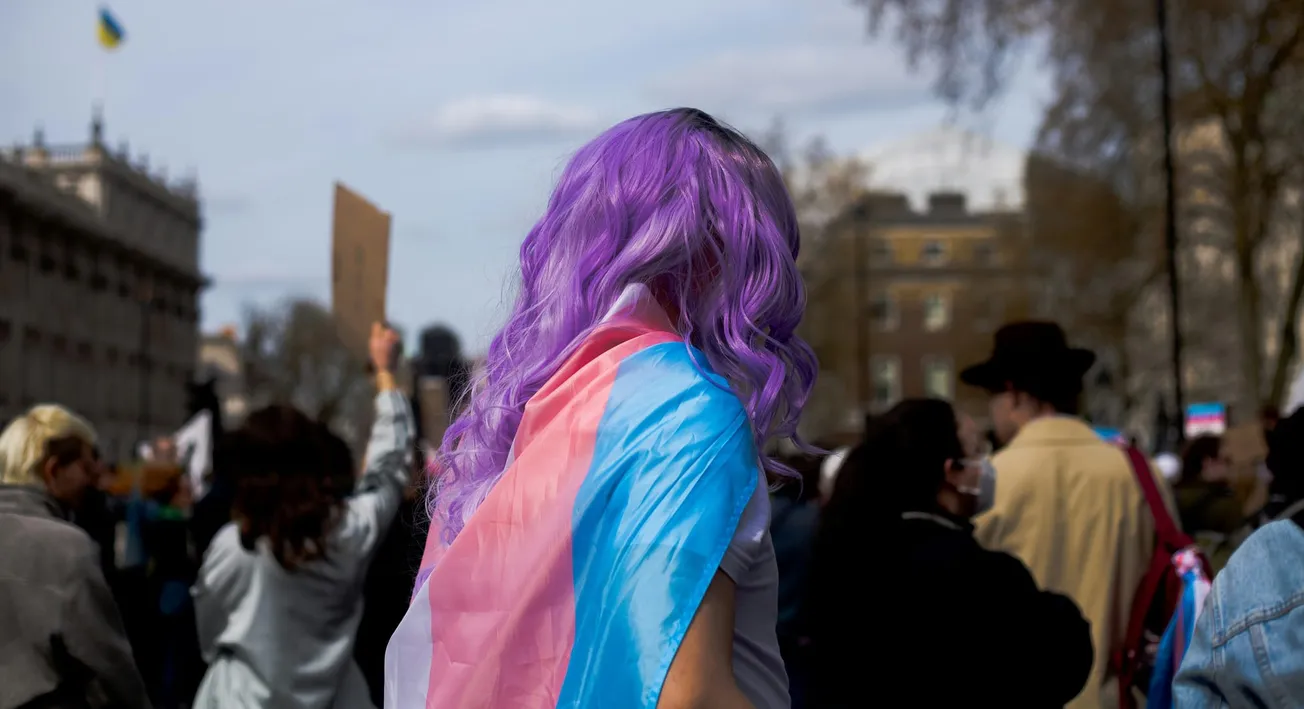According to the president of the United States, immigrants are "poisoning the blood of our country." Migrants accused of crimes have "bad genes.” And if you believe health secretary Robert F. Kennedy, Jr., autism is an “epidemic” worse than Covid—which mostly “killed old people.” Autism, Kennedy recently claimed, “destroys families” because many autistic kids will never hold a job or pay taxes.
Trump and Vice President JD Vance also say they want more babies born, not fewer. At the anti-abortion March for Life, Vance proclaimed that, specifically, he wanted “beautiful young men and women” to have those children.
These comments aren’t merely strange or offensive. They are downright dangerous given this country’s shameful history of eugenics and forced sterilization.
Around the turn of the 20th century, multiple states passed laws that allowed for the sterilization of people whom they deemed unfit to procreate. The laws were based on the eugenic theory that undesired traits such as being poor, unintelligent, or disabled were hereditary, and could be eliminated from the gene pool. As many as 70,000 people in the mainland U.S. and 200,000 in Puerto Rico were sterilized under state-sponsored eugenics programs that performed forced hysterectomies, tubal ligations, and vasectomies. The campaigns continued until the early 1980s and disproportionately targeted Black and brown women. U.S. eugenics laws even inspired Nazi Germany’s compulsory sterilization program and murder of institutionalized people.
But people are still being sterilized against their will today—namely, disabled people under guardianship, and people in prisons or jails. “The story that we're told about forced sterilization is that it's something that was confined to this dark period in history,” said Ma’ayan Anafi, senior counsel for health equity and justice at the National Women’s Law Center. “But the reality is that laws explicitly allowing the forced sterilization of disabled people exist right now—not just in a handful of states, but in the majority of them.”
To advocates like Anafi, the existence of these laws is all the more alarming given the views espoused by the White House. “The president has shamelessly relied on eugenics in service of his anti-immigrant agenda as he attempts to manufacture a moral panic,” they said. “Eugenics has always been an inherently racist ideology, and President Trump is giving us a textbook example of that.”
Kennedy is promoting “eugenic-style pseudoscience” when it comes to people with disabilities, particularly autistic people, they said. “He has sort of a campaign to essentially rid the country of autistic people,” Anafi continued, referring to his pledge to eliminate the environmental exposures that he claims cause autism.
The Trump administration’s statements and policies suggest a project of attacking the bodies of people who they do not want to reproduce. “What we've seen coming out of this administration shows us that eugenics is far from a thing of the past,” Anafi said.
A legacy of nonconsensual surgeries
Forced sterilizations exploded after the 1927 Buck v. Bell decision in which the Supreme Court upheld the sterilization of Carrie Buck, a Virginia woman living in a mental institution. There is no evidence that Buck had any disabilities, but after she became pregnant from rape at 17, her foster parents had her committed. The Court said states could sterilize people they deemed to be genetically unfit, with Justice Oliver Wendell Holmes, Jr., infamously writing, “three generations of imbeciles are enough.” Just five years later, there were 27 states with eugenic sterilization laws.
However, public opinion on eugenics changed after the Nazis adopted U.S. eugenic theories. In the 1942 case Skinner v. Oklahoma, the Supreme Court said states can’t use sterilization as criminal punishment. (Jack Skinner challenged a forced vasectomy following his third criminal conviction.) The Skinner decision rejected eugenic sterilization as a valid government practice and said procreation was a basic civil right—but it did not explicitly overturn the Buck ruling.
And while eugenics fell out of favor after World War II, forced sterilizations continued with different state justifications, namely concerns over welfare costs and population control. Vulnerable groups were still targeted for sterilization abuse, including Black women being subjected to hysterectomies and tubal ligations without consent. This practice was so widespread that it was called the “Mississippi appendectomy.”
One notorious case of abuse in the 1970s involved a Los Angeles hospital that performed involuntary sterilizations on pregnant Mexican-American women whose primary language was Spanish, pressuring them to consent when they were in labor. The women sued. One trial witness in their case, Madrigal v. Quilligan, recalled the head of the OBGYN department saying that “poor minority women in LA County were having too many babies; that it was a strain on society.” The women lost their claim for damages, but the state implemented new procedures like bilingual consent forms and enforced waiting periods as a result.
Present-day abuses
Between 1997 and 2013, two California prisons sterilized nearly 1,400 incarcerated people during labor, plus an unknown number of women and transgender people during abdominal surgeries. It’s not clear how many people—if any—gave proper consent. An investigation of 150 sterilizations performed between 2006 to 2010 found that the procedures were done using state funds, though without state approval. One doctor said the money was nothing compared to “what you save in welfare.”
Judges have also offered defendants reduced sentences or earlier parole if they consent to sterilization. That doesn’t give people a meaningful choice, Anafi said. In 2017, a Tennessee judge offered sentence credits to people who got a vasectomy or birth control implant, and claimed he was trying to reduce the number of infants born to parents addicted to drugs. He reversed the policy one week after it received news coverage, but of the more than 30 women who signed up, several had already received implants.
Then, in 2020, a whistleblower alleged that a doctor performed nonconsensual hysterectomies on immigrants at an ICE detention facility in Georgia. Another detainee alleged that a doctor removed her fallopian tube without consent. “For all we know, these [accusations] might just be the tip of the iceberg,” Anafi said. (Still, initial reporting that suggested “mass hysterectomies" was never confirmed.)

Michele Goodwin, professor of constitutional law and global health policy at Georgetown Law, underscored that demonizing the reproduction of certain groups is not new—but some of the targets have changed. At the time of Buck v. Bell, disfavored groups included Italian and Irish immigrants. She called the case “a horrific part of the American jurisprudential legacy, in that it shepherded in this notion that there were certain categories of people who were less worthy than other people, as evidenced in their genes.” Goodwin noted that we see echoes of this thinking in the Great Replacement theory, the narrative that specific groups are overwhelming the desired—read: white—population of the country. “It's an almost complete analog from the past,” she said.
Disabled people are one group that has consistently faced attacks on reproductive autonomy. A 2022 National Women’s Law Center report found that 31 states plus Washington, D.C. have laws explicitly allowing disabled people to be surgically sterilized against their will. This is not ancient history, Anafi said: Two of the laws were passed in 2019.
About half of the laws apply only to disabled people under guardianship, sometimes called conservatorship, where a proxy makes legal and medical decisions for someone with developmental disabilities or mental health conditions. (The statues can impact cisgender men, but mostly target women, girls, and other people who can get pregnant.) The proxy needs a court order from a judge before the sterilization can take place, Anafi said. In the other states, people such as doctors, parents, social workers, or government officials could ask a judge to authorize the procedure.
But in the 15 states where sterilization laws are unclear, sweeping guardianship statutes might allow guardians to authorize the procedure without even going through a judge, they said. On the flip side, some state laws that ban forced sterilization are so overbroad they can actually prevent some disabled people who want a sterilization procedure from getting it.
"[Buck v. Bell] shepherded in this notion that there were certain categories of people who were less worthy than other people, as evidenced in their genes.”
These sterilization laws are constitutional under current precedent. According to Anafi, courts “have distinguished them from Skinner and said, ‘this is different, because this is for disabled people's own good.’” States and judges argue that sterilization laws are a “protective measure,” they added, even though they take away people’s autonomy. “This is state-sanctioned violence against disabled people, and it's something that can have truly horrific and traumatic impacts,” Anafi said.
But because Buck v. Bell was never overturned, they added, it’s harder to challenge these laws. Ending forced sterilizations necessarily involves overhauling guardianship laws, Anafi said. “The guardianship system is a fundamentally flawed and broken one. It is massively overused and abused, and it deprives people of their rights to make some of the most basic decisions about their lives.”
Coerced birth control
When it comes to non-permanent birth control for people under guardianship, there's no requirement in any state to get a court order first, Anafi said. Per disability advocates, forced birth control is routine. A high-profile example involved Britney Spears testifying in June 2021 that she wanted more children, but her conservatorship team would not allow her to have her IUD removed. (A judge terminated the 13-year conservatorship later that fall.)
Anafi noted that continuous coerced use of long-acting reversible contraception like IUDs or implants can prevent procreation in a way that is tantamount to sterilization. “That can essentially take away [someone’s] right to decide whether to have children,” they said.
Women not under guardianship can face subtle pressure or outright coercion to use IUDs and implants over other birth control methods, and there’s evidence of biased counseling based on patients’ race. One study showed that, among a pool of low-income patients, providers were more likely to recommend IUDs to Black and Latina women than to white women. Once inserted, some providers refuse to remove the devices when patients ask.
A leader in recent efforts to expand use of long-acting contraception among the general public has been Upstream USA, a group that offers training and technical assistance to providers, and has promoted birth control as a way to reduce or end poverty. Reproductive justice advocates have accused Upstream of reviving eugenic ideas and argue that reducing poverty requires social policy—like higher minimum wages and paid family leave—not limiting reproduction. (In 2023, the Biden administration announced a five-year partnership with Upstream to train government-funded providers and clinics.)
Encouraging poor health—and even death
The White House doesn’t need a mass forced sterilization effort in 2025 to harm vulnerable people and control their reproduction. The Trump administration has already launched a broad assault on marginalized families: delegitimizing vaccines, trying to slash Medicaid and SNAP food benefits, defunding family planning clinics, and destroying programs that fund counseling and disability services for kids and help low-income people pay their heating and cooling bills.
In particular, the House-passed reconciliation bill could lead to nearly 8 million people losing Medicaid insurance coverage. “For so many low-income women, women of color, disabled women, programs like Medicaid are critical for being able to decide whether to build their families,” Anafi said “But those are not the communities that the Trump administration wants to be having children.”
Plus, Trump’s three Supreme Court appointees provided the votes to overturn Roe v. Wade, allowing states to ban abortion. There was already a high maternal mortality rate in the U.S., especially among Black, Indigenous, and other women of color. Now, more are dying as hospitals refuse to provide routine care. Others are being criminalized for pregnancy loss. Abortion bans can also lead to the closure of clinics or an exodus of OBGYNS, which further limits access to prenatal care and other reproductive health services.
“For so many low-income women, women of color, disabled women, programs like Medicaid are critical for being able to decide whether to build their families. But those are not the communities that the Trump administration wants to be having children.”
Lupe Rodriguez, executive director of the National Latina Institute for Reproductive Justice, said these limits on health and social services will disproportionately harm Latinas. “All of these really terrible health outcomes are building on a legacy of inequities that our community has faced,” Rodriguez said, including lack of insurance, language barriers, and fear of getting care.
In March, Trump paused funding to some Title X family planning clinics that had previously offered birth control, cancer screenings, and STI testing to low-income people, including undocumented patients. Any resulting closures could harm vulnerable communities for years. The White House has even allowed ICE to make arrests near hospitals, which discourages people from getting health care because they could be separated from their families, Rodriguez said, adding that Latinas in ICE detention are reporting being denied medical care.
“We're descending pretty quickly into a more critical situation in terms of public health,” Rodriguez said, adding that there is a “bigger narrative here around criminalizing, oppressing, coercing communities of color into maybe leaving the country, or just having really terrifying experiences in their daily lives.” It’s part of a project against people the Trump administration doesn’t “believe are fit to be a part of this society,” she said. “It’s incredibly dangerous.”
Anafi contrasted this campaign against supposed pro-natalist attitudes. “When this administration talks about wanting women to have more babies, they don't mean any women,” they said. “They mean women who are white, who are non-disabled, who are non-immigrants, who are middle or upper class.”
Taking health care away from marginalized people could kill them. That might be the point for proponents of so-called “soft eugenics.” In a country without universal health care, which RFK opposes, health is a personal responsibility. If you don’t have the time or money to keep yourself and your family alive, that’s your fault—and could be crudely described as culling the herd.
For example, Kennedy has tacitly implied that people who die from vaccine-preventable diseases are simply unwell. “It’s very, very difficult for measles to kill a healthy person,” Kennedy said in March amid a Texas outbreak that killed two children. In May, Kennedy told Fox News that “only very sick kids should die from measles.” Recently, he tried to undo Covid vaccine recommendations for children and pregnant people—which, by his own logic, could lead to some of them dying. The proposed change could result in insurers refusing to cover the shots, which would harm low-income people the most.
Who counts as a person?
Since its founding, the U.S. has held tight to the notion that only some kinds of people are worthy of full citizenship. This includes the right to create a family. “Reproduction and reproductive capacities have been the kind of sword that's been swung over centuries to deny people full personhood,” Goodwin said. Beginning with chattel slavery, then through abortion bans, legalization, and back again, “women, people with the capacity for pregnancy, have borne the brunt of political agendas.”
The administration’s attempt to end birthright citizenship is another indirect way to try to control who has children. If kids born here to undocumented parents are no longer granted citizenship, they can be deported. At its heart, this policy is about encouraging people to leave the country—or never to come here at all. Before the Supreme Court, the Trump administration cynically claimed that the 14th Amendment provision establishing birthright citizenship only applies to descendants of enslaved people.
This is not because they care about Black people, Goodwin said. It’s just the only conceivable argument they can make in order to deport more Central and South American immigrants. “Implicitly, all the white people are okay. We can't, at least for today, deny Black people who are born here [citizenship],” she said. “But at least we can attack that with regard to brown people, right?”
While the White House has not yet tried to enact explicit sterilization strategies, it doesn’t mean they won’t, Goodwin said. What’s to stop this administration from deciding it disagrees with the Skinner ruling and supports sterilization as criminal punishment? What’s to stop them, she asked, from doing almost anything at all?
“There has been a sense amongst those who care about constitutionalism that if you care, everybody else will, and they won't bother to do the things that are clearly unconstitutional,” Goodwin said. “What we saw from the first few weeks of this Trump administration is, it's not a problem to put forward executive order after executive order that are known to be a violation of the Constitution.”
The administration is taking action now and dealing with lawsuits later. Advocates, on the other hand, are hoping federal courts will enforce longstanding law. But another change the White House is seeking in the birthright citizenship case is a limit on nationwide injunctions. This could result in chaos, with blatantly illegal policies being enforced in states that didn’t challenge them. (Only 22 states sued over the birthright citizenship executive order, for instance.)
If the Supreme Court sides with the administration on injunctions, people living in conservative-led states will have the most to lose. Should that happen, Goodwin said, we will see efforts to control reproduction “not just coming through the back door, but through the front door.”
This story was edited by Garnet Henderson and copy edited and fact checked by Hannah Rappleye.










